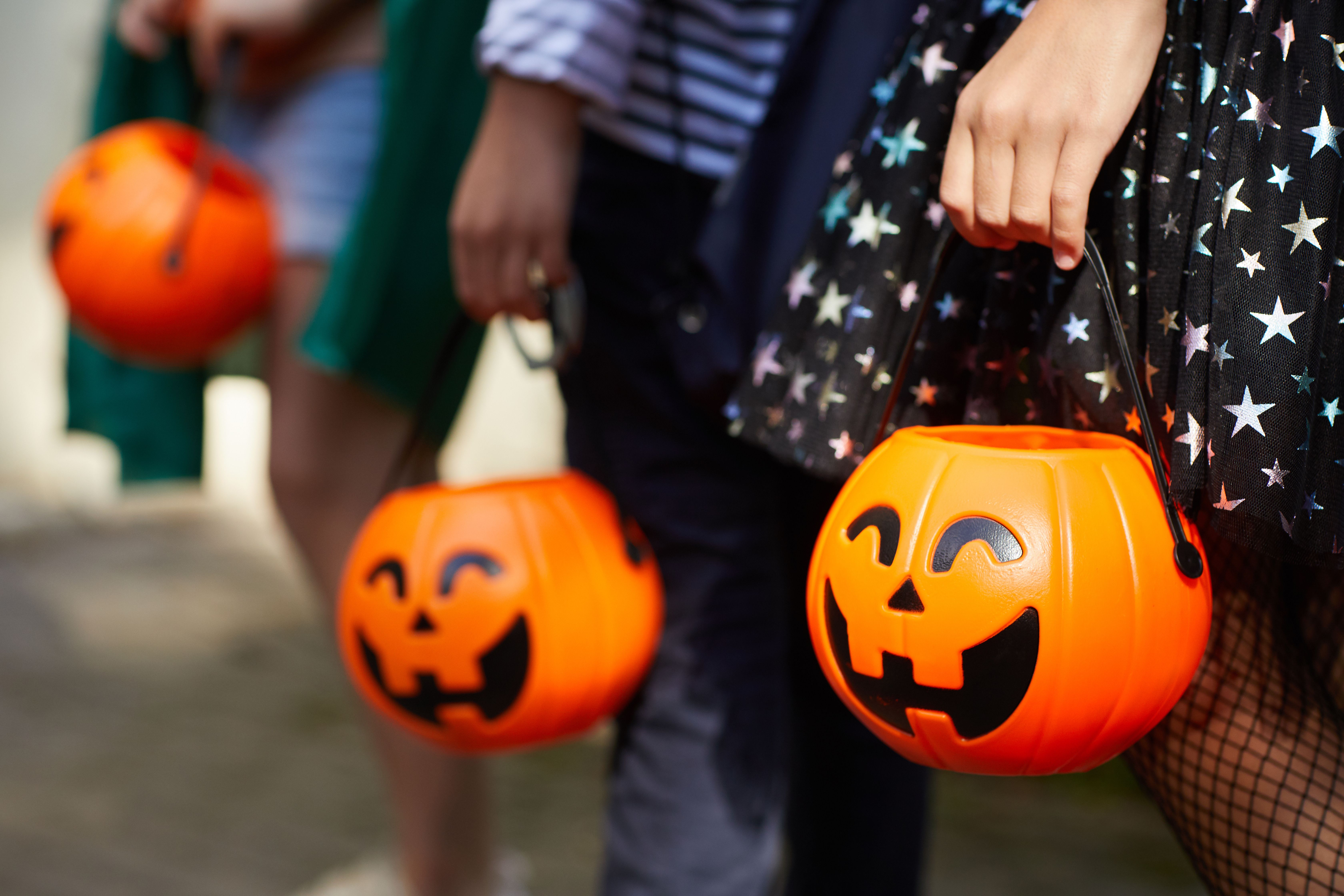Halloween with Food Allergies: Expert Tips for Safe Trick-or-Treating
Ensure a safe and fun Halloween for kids with food allergies by planning ahead, choosing safe treats, and focusing on festive activities.
By
Patrick Campbell
| Published on October 31, 2025
Fact checked by:
6 min read
Credit: Adobe Stock

Halloween is meant to be full of fun, a night of costumes, candy, and community. But if your child has a food allergy, October 31 can also bring unwanted stress. Thankfully, with a little planning, families with food allergies can keep Halloween safe, inclusive, and just as magical.
The following tips are adapted from expert recommendations from the American Academy of Pediatrics (AAP), Food Allergy Research & Education (FARE), and the American College of Allergy, Asthma & Immunology (ACAAI).
Step 1: Plan Ahead Before the Big Night
1. Review your child’s allergies and safety plan.
Before trick-or-treating, make sure everyone in your household and anyone supervising your child knows exactly which foods to avoid and what steps to take in case of a reaction. If your child has been prescribed an epinephrine auto-injector, double-check that it is not expired and that adults know how to use it.
The AAP recommends reviewing your child’s allergy action plan every year before Halloween.
HealthyChildren.org – AAP Halloween Allergy Tips
2. Stock up on safe treats.
Purchase a small stash of allergy-friendly candy or non-food items that you know are safe for your child. After trick-or-treating, you can “swap” unsafe candy for these trusted items—a strategy recommended by FARE.
FARE: Tips for Trick-or-Treating with Food Allergy
3. Talk about the plan.
Go over the night’s plan with your child—which candies to accept, which to skip, and the importance of waiting until you have checked each item at home. Knowing the plan helps children feel confident instead of anxious.
4. Choose allergy-aware neighborhoods and events.
Look for homes with a teal pumpkin—a symbol of the FARE Teal Pumpkin Project, which promotes offering non-food treats so all children can participate safely.
FARE: Teal Pumpkin Project
Step 2: Trick-or-Treating Safely
1. Use a “two-bag” system.
Have your child carry one bag for candy they know is safe and another for items to check later. This prevents on-the-spot snacking that could lead to accidental exposure.
2. Avoid eating while out.
It is tempting to snack while walking, but labels cannot always be checked in the dark—and fun-size candies can have different ingredients than full-size versions. Wait until you are home and can read the label clearly.
FARE and ACAAI both recommend saving all candy for home review before eating.
3. Read every label—every year.
Manufacturers can change recipes or production methods. Even a candy that was safe last year might not be this year. Always look for “Contains” or “May contain” statements, especially for common allergens like peanuts, tree nuts, milk, eggs, soy, and wheat.
4. Avoid homemade or unlabeled treats.
Cookies, cupcakes, or candy without ingredient labels should be avoided—no matter how delicious they look. Cross-contact (when allergens touch other foods) can trigger reactions even in trace amounts.
5. Keep emergency supplies handy.
Carry your child’s allergy medication and an epinephrine auto-injector (if prescribed). Keep them somewhere easily accessible—not buried under costumes or candy.
Step 3: After the Candy Haul
1. Sort through everything together.
Once you are home, go through your child’s candy haul together. Let them enjoy the excitement, but separate anything that is unlabeled, questionable, or contains known allergens. Create a “safe stash” of candy they can enjoy.
2. Make a fun “swap tradition.”
Some families trade unsafe candies for safe options or non-food prizes—like glow sticks, stickers, or small toys. It is a great way to turn safety into a celebration.
3. Teach self-advocacy.
Encourage your child to feel proud of managing their allergies responsibly. Praise them for checking labels or asking questions—these are lifelong skills that build confidence and independence.
4. Focus on the fun, not the fear.
Halloween is not just about the candy. Plan activities that make the night feel festive—a movie marathon, pumpkin carving, or a costume parade. The ACAAI encourages shifting the spotlight to non-food fun so kids never feel left out.
ACAAI: Safe and Fun Halloween for Kids with Allergies
Key Takeaways
- Review your child’s allergy plan and check emergency medications.
- Use the “no eating while trick-or-treating” rule.
- Separate candy into “safe” and “to be checked” piles.
- Look for teal pumpkins to find allergy-friendly homes.
- Make swaps or non-food rewards part of the tradition.
- Celebrate safe participation—not restriction.
Resources for Families
- Food Allergy Research & Education (FARE)
- American Academy of Pediatrics – Halloween Allergy Tips
- American College of Allergy, Asthma & Immunology – Halloween Safety
Disclaimer
This article is for educational and general informational purposes only. It does not replace professional medical advice, diagnosis, or treatment. Always consult your child’s pediatrician or allergist for individualized guidance on managing food allergies and participating in holiday events safely.

